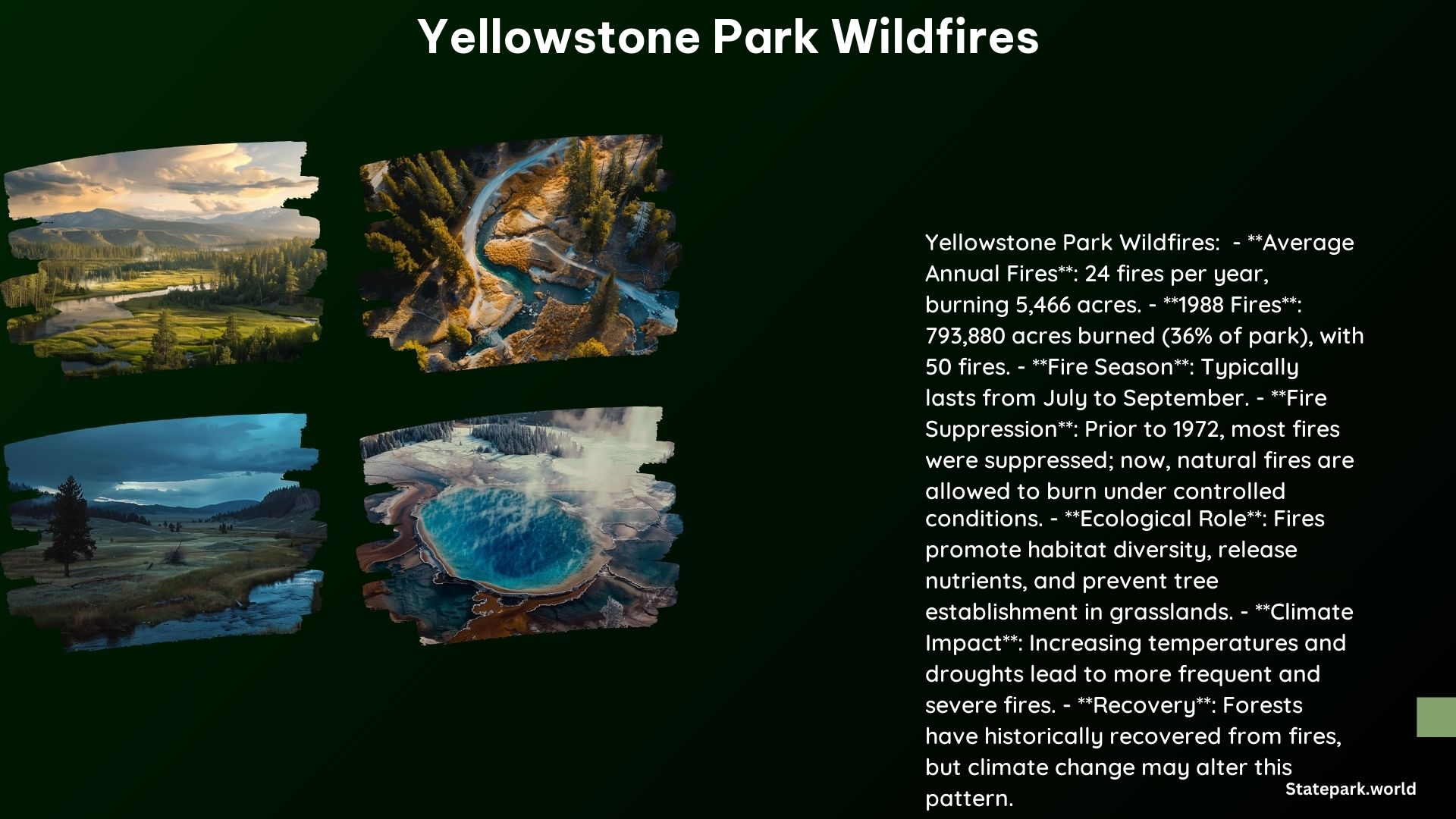Yellowstone National Park is renowned for its diverse and dynamic ecosystems, and wildfires play a crucial role in maintaining this delicate balance. From the historical context of the 1988 fires to the current fire management strategies, this blog post explores the ecological significance of wildfires in Yellowstone and how they contribute to the long-term health of the park’s forests.
Historical Context: The 1988 Fires
The largest wildfire in Yellowstone’s recorded history occurred in 1988, burning 793,880 acres (36% of the park) and costing $120 million ($310 million in 2024) to suppress. This event was a turning point in the park’s fire management policies, leading to a recognition of the beneficial ecological role of fire.
Ecological Role of Fire

Fire as a Natural Process
Fire has been a key factor in shaping the Greater Yellowstone Ecosystem (GYE) for thousands of years. It promotes habitat diversity, removes forest overstory, and releases nutrients for plants, making it an essential component of the ecosystem’s natural cycle.
Native Plant Adaptations
Many native plant species in Yellowstone have evolved adaptations to survive and thrive after periodic fires. These adaptations are crucial for their life cycles, as fire helps to clear the way for new growth and regeneration.
Current Fire Activity and Management
Fire Danger Level
The parkwide fire danger level in Yellowstone is currently MODERATE, with regular updates on fire-related closures and conditions available to visitors.
Fire Suppression
While human-caused fires are suppressed, lightning-caused fires are assessed individually to allow them to burn if they do not pose a threat to human life, cultural resources, or public acceptance. This approach recognizes the ecological benefits of fire while prioritizing public safety.
Impact of Climate Change
Changing Fire Patterns
Climate change is altering fire patterns in Yellowstone, with more frequent and severe fires expected in the future. This could pose a threat to the resilience of the park’s ecosystems, and researchers are closely monitoring the long-term impacts.
Research and Monitoring
Long-term Study
Professor Monica Turner has been studying the recovery of forests in Yellowstone since the 1988 fires, focusing on the impact of changing fire patterns and climate conditions. Her research provides valuable insights into the park’s ecosystem dynamics.
Statistics and Data
| Metric | Value |
|---|---|
| Average Fires per Year | 24 |
| Average Acres Burned Annually | 5,466 |
| Largest Fires | 1988 fires, 793,880 acres burned |
Conclusion
Wildfires in Yellowstone National Park are a natural and essential part of the ecosystem’s life cycle. By understanding the historical context, ecological role, and current management strategies, visitors can appreciate the vital contribution of fire to the long-term health and resilience of Yellowstone’s forests.
